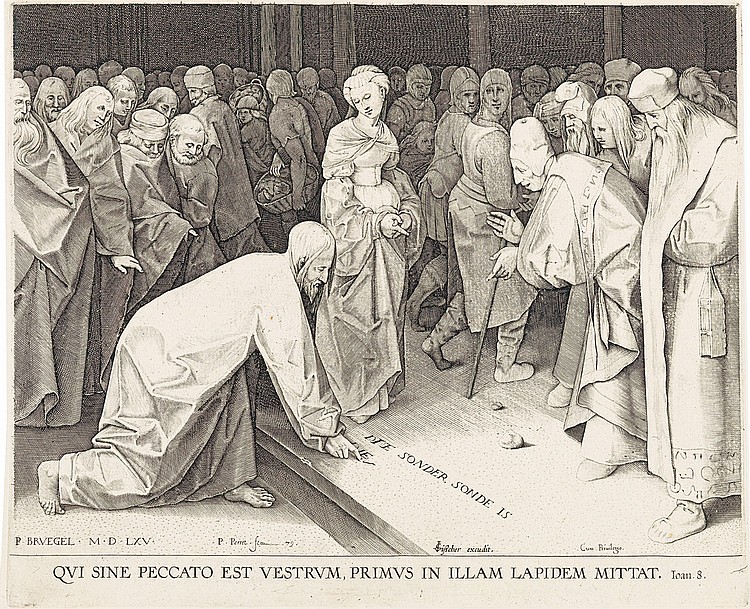Where is the Proclamation?
Sometimes older church leaders will look at younger innovative churches and wonder if the proclamation of the gospel is being lost. They wonder if there is still a place for preaching in these new church models.
It is true that churches like mine—which often rails against preaching that is individualized, overly rationalistic, disembodied information dumps—could be perceived as drastically debasing the role of proclamation.
But we haven’t. In fact, we have elevated the role of proclamation in our church, just not the way people would have thought.
Not If, but Where
In our worship gathering the question is not if proclamation happens, but where it happens.
Someone new to our gathering, steeped in a traditions form of expository preaching, commented that while exposition didn’t happen in the sermon (as classically understood), it instead happens throughout the entire worship service. This is absolutely correct.
Let me explain by walking us through that week’s worship gathering.
The preaching text was Romans 8.1-8, 12-13, celebrating that for those in Christ there is therefore now no condemnation. The rest of the lectionary was Isaiah 43.16-21, Psalm 126, and John 7.53 – 8.11 [the woman caught in adultery].
A Service of Proclamation
-
- Silence, Invocation, Call to Worship: After the Time of Silence and the Invocation we sang the call to worship, “Wake Up,” (which we had recently written based in the text of Roman 13), calling us to attend to the work of Christ.
-
- Scripture Reading: Then comes the Scripture readings, read from the four walls of the sanctuary symbolizing that we are being surrounded by the words of God, ending with a reading from the Gospel of John and how Christ did not condemn the woman caught in adultery.

- Scripture Reading: Then comes the Scripture readings, read from the four walls of the sanctuary symbolizing that we are being surrounded by the words of God, ending with a reading from the Gospel of John and how Christ did not condemn the woman caught in adultery.
-
- Video Icon and Litany: Between the readings and the sermon is what we call the Liturgicon (a litany and video icon), which in this case was a guided meditation on the painting, “Christ and the Adulterous” by Jan Brueghel, focused on Christ’s non-condemning The congregation interacted around several questions: Why is Jesus the lowest in the painting? Who is at the center of the painting? What is the significance of that? Why is the crowd fading into darkness? Notice that man who dropped the stone…notice that he is the second lowest. What does his posture resemble? Notice the shape of the woman’s hands. What does all this tell us about Jesus?
-
- Sermon: Only after all this comes the sermon (which for us is only one aspect of the dual apex of the service), which we conceive as a focused time of displayingthe gospel of Christ and drawing everyone into the Kingdom of God. In the sermon there of course will be information conveyed and reference made to grammar and genre. But the true reference of exposition is always Christ himself and his saving work towards which all our preaching must speak. This week’s sermon focused on living in the hope that while we are guilty, in Christ we are not condemned.
-
- Prayer and Musical Response: After the sermon is a time of response through congregational prayer and two worship songs (“Grace Flows Down,” “Wondrous Cross”).
-
- Eucharist: Then comes the second apex of our service, the Eucharist, or Communion, or the Lord’s Table, which is itself a fully participatory exposition of the non-condemning hospitality of Christ, and a fully participatory congregational response in faith and hope.
-
- Musical Response: During this time of coming to the Table we celebrated the non-condemning love of Christ in three songs: “You are My King,” “Kyrie Eleison,” and “Let us Love and Sing and Wonder.”
-
- Benediction: Finally, in the Benediction, we are sent out as the non-condemned people of God, the Body of Christ, offered for the life of the world.
Fully-bodied, Multisensory Proclamation
Of course, reading this pales in comparison to experiencing it. But at Life on the Vine biblical proclamation happens throughout the entire service, not just in the sermon. And it is done is a fully biblical, artistic, and immersive situation. Instead of a 30 minute exposition of the grammar, structure, and meaning of Romans 8, we have a 75 minute exposition engaging the heart, soul, mind, and spirit—rather than just the mind.
The question for all of us shouldn’t be if we still practice proclamation, but where and how we practice it? Are we connecting the heart, mind, and spirit? Or just one of those?
(First published by Gravity Leadership)
